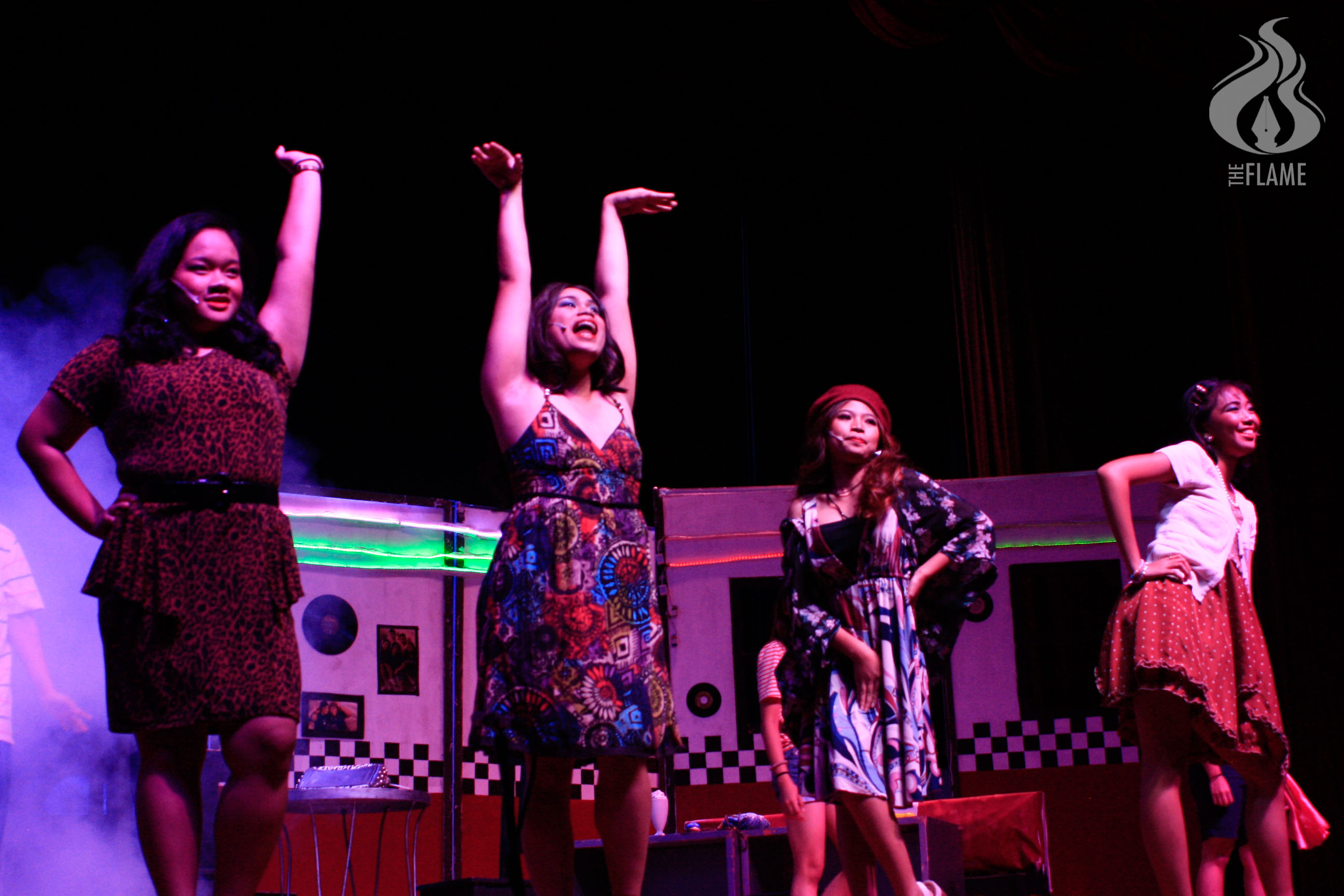By MHERYLL GIFFEN L. ALFORTE

FOR SOMETHING to change, one must be willing to go against the raging current; one must be that drop of color against black; one must be brave enough to be a catalyst of something great. No matter how small it is deemed, one ripple can have an enormous impact.
For their major production, Mediartrix presented “Bb. Bahaghari,” a musical written by Gerard De Leon and directed by Vienna Gasper. Set in 1994, the musical follows the story of Red, a young closeted gay man who has made it his resolve to make a dent on the prejudiced society and introduce the concept of LGBTQIA+ through the use of his talent for writing under the pen name of Bb. Bahaghari.
The musical starts with a contemporary dance that reflects Red’s struggles. Lights are dimmed as he sings and basks in the spotlight. Breaths are bated as the performer owns the stage—Red’s emotions are captured perfectly in every cadence of the song. This introduction cements him in the hearts of every spectator; it gives them a taste of who he is and his inner turmoil.
Central to the plot are Red’s friends who include Aurelle, a openly gay man who always makes sure to look lovely in front of people as he is always clad in flashy outfits, a boyish girl named Chitoy who is usually perceived as a lesbian because of stereotypes, and Madame Sundae, a transgender woman in her mid-40s.
These characters are important to Red as they are pivotal to fueling his resolve not only to stand and fight for himself but also for others. As he learns more about the struggles that they face which ultimately mirror his own, Red develops a sense of camaraderie as he finds a family in them, in contrast to his supposed family who throws him out for proudly embracing his own identity.
The story shifts and loses its focal point as it tackles a variety of problems of the characters. This attempt to introduce different storylines almost causes the musical to lose a grip on its audience’s attention. However, the musical manages to pick it up when the spotlight centered on the protagonist again.
The musical is eye-catching for its neon lighting that illuminates the entire stage, as well as the articles of clothing anchored on the 90’s vibe. Aside from being visually striking, it symbolizes the lively and vibrant atmosphere in Lily’s Diner where most of the scenes take place. It also acts as a safe place for both Red and his friends. These visual elements not only serve to interest and entice the audience, but also underlie the musical’s central themes of acceptance, resistance, and prejudice.

The story further unfurls when the protagonist is taken out of the light. This renders the audience momentarily lost and in a state of wonder. As the story progresses, this abrupt detachment gradually settled on the audience. The storytelling gained its initial momentum as the characters seem to learn how to firmly stand on their own, even without Red’s presence. This is conspicuous when Bb. Bahaghari’s works are still being published, inspiring not only his friends but also the lives of everyone beyond their safe place.
For a musical, the execution of the sounds is incredibly important. Fortunately, there were little to no observable technical difficulties. If there were, the actors did a commendable job by pouring more effort into their facial expressions and gestures to redirect the audience’s attention.
The soundtrack was also noteworthy as each song was thoughtfully composed and wonderfully performed. This was especially evident in a scene where Red cries out as he reaches his breaking point. His musical number made the song feel more alive as it caters to the audience’s feelings.
Ultimately, the musical invokes the audience to realize what the LGBTQIA+ community experienced back then and how their experiences are similar to the present time. Time did nothing for their community, as they have been constantly abused and bruised for simply embracing their true identity. However, this does not stop them from fighting and striving to make their voices heard.
The production tells viewers that they can make a difference in their own way, for they are their own Bb. Bahaghari. It shows them that to be a catalyst of change, one must be brave enough to be that vibrant piece that would dazzle the room vividly like the neon lights; just like his namesake, Red is the first strip of color that smears the blank canvas. He paved the way for a fount of hues to stain the sky with colors that gleam across the horizon—a testament of who they are and what they are fighting for. F



